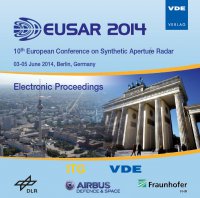An L- and S-band SAR Mission Concept for Earth Science and Applications
Conference: EUSAR 2014 - 10th European Conference on Synthetic Aperture Radar
06/03/2014 - 06/05/2014 at Berlin, Germany
Proceedings: EUSAR 2014
Pages: 4Language: englishTyp: PDF
Personal VDE Members are entitled to a 10% discount on this title
Authors:
Rosen, Paul A. (Jet Propulsion Laboratory (JPL), California Institute of Technology (Caltech), USA)
Kim, Yunjin; Hensley, Scott; Shaffer, Scott; Veilleux, Louise; Hoffman, James; Chuang, Chung-Lun (JPL, Caltech, USA)
Chakraborty, Manab (Space Applications Centre (SAC), Indian Space Research Organization (ISRO), India)
Sagi, V. Raju (ISRO Satellite Centre, ISRO, SRO, India)
Satish, R. (ISRO Satellite Centre, ISRO, India)
Putrevu, Deepak; Bhan, Rakesh (SAC, ISRO, India)
Abstract:
The National Aeronautics and Space Administration (NASA) in the United States and the Indian Space Research Organisation (ISRO) have embarked on a study of a future Earth-orbiting science and applications mission that exploits synthetic aperture radar to map Earth’s surface every 12 days. To meet demanding coverage, sampling, and accuracy requirements, the system was designed to achieve over 240 km swath at fine resolution, and using full polarimetry where needed. To address the broad range of disciplines and scientific study areas of the mission, a dual-frequency system was conceived, at L-band (24 cm wavelength) and S-band (10 cm wavelength). To achieve these observational characteristics, a reflector-feed system is considered, whereby the feed aperture elements are individually sampled to allow a scan-on-receive (“SweepSAR”) capability at both L-band and Sband. This paper describes the mission characteristics, current status of the joint study, and the technology development efforts in the United States that are reducing risk on the key radar technologies needed to ensure proper SweepSAR operations.


